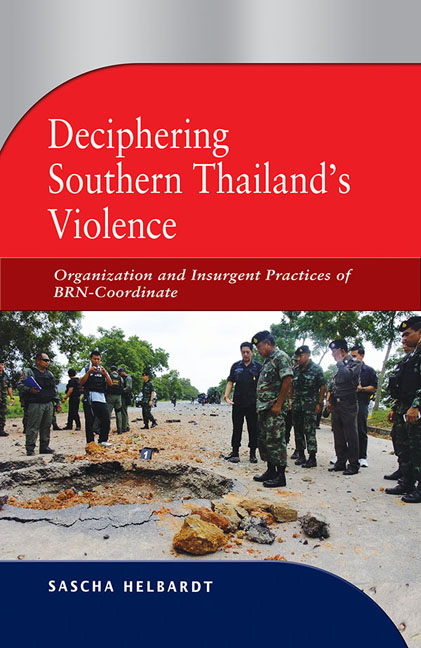Book contents
- Frontmatter
- Dedication
- Contents
- List of Figures
- List of Abbreviations
- Preface and Acknowledgments
- 1 Introduction
- 2 Organizational Aspects of BRN-Coordinate
- 3 Making Insurgents: Recruitment, Training and Control
- 4 Bringing the Actors Back In: Who Are the Insurgents?
- 5 Making Sense of Violence: Power and the Insurgency's Communicative Side
- 6 Conclusion
- References
- Bibliography
- About the Author
4 - Bringing the Actors Back In: Who Are the Insurgents?
Published online by Cambridge University Press: 19 May 2017
- Frontmatter
- Dedication
- Contents
- List of Figures
- List of Abbreviations
- Preface and Acknowledgments
- 1 Introduction
- 2 Organizational Aspects of BRN-Coordinate
- 3 Making Insurgents: Recruitment, Training and Control
- 4 Bringing the Actors Back In: Who Are the Insurgents?
- 5 Making Sense of Violence: Power and the Insurgency's Communicative Side
- 6 Conclusion
- References
- Bibliography
- About the Author
Summary
A study on an armed group and communication cannot leave out an analysis of the actors that fill the organization with life and commit the violent acts. However, moving down the scale of observation from the mesolevel of organization, two fundamental questions typically arise. While the first question focuses on who the organizers of violence are in terms of an insurgent's social, economic, political as well as psychological background, the second question asks why. Here, there is a tendency to develop theories about prime motives such as greed, grievance, or the fight for a God-given or traditional order. In order to answer these questions in the face of the incomprehensibility of fanaticism and violence, there has been a tendency to search for a “terrorist profile” — a pattern of abnormality, which is thought to explain the involvement of an individual in a campaign of collective violence. Unfortunately, however, the research approaches that have thus far tackled this question, including individual psychological models and the so-called root-cause research, have substantially supported the thesis of a terrorist profile. Despite the fact that such a profile has yet to be found, profiling remains attractive in the face of a lack of data.
The first part this chapter considers the limited statistical evidence available about insurgents in order to challenge the assumption of a homogenous insurgent profile, one that supports the view of an economically or educationally deprived stratum as a recruiting ground for insurgents. In order to present the insurgency in a clearer light, the chapter then proceeds to set down the routes of three BRN-Coordinate members who perform different functions in the group. The aim here is to depart from the simple picture of BRN-Coordinate as a homogenous group that moulds all its members — in a totalling fashion — into brainwashed members (as Chapters 2 and 3, which described BRN-Coordinate as a rather formal model of a smoothly functioning system, may have indicated). Instead of focusing on how the “system” works, I will illustrate that from an actor perspective, motives and routes of involvement are marked by complexity as well as significantly diverging meanings, and that members can retain a degree of agency within the organization.
- Type
- Chapter
- Information
- Deciphering Southern Thailand's ViolenceOrganization and Insurgent Practices of BRN-Coordinate, pp. 140 - 179Publisher: ISEAS–Yusof Ishak InstitutePrint publication year: 2014



